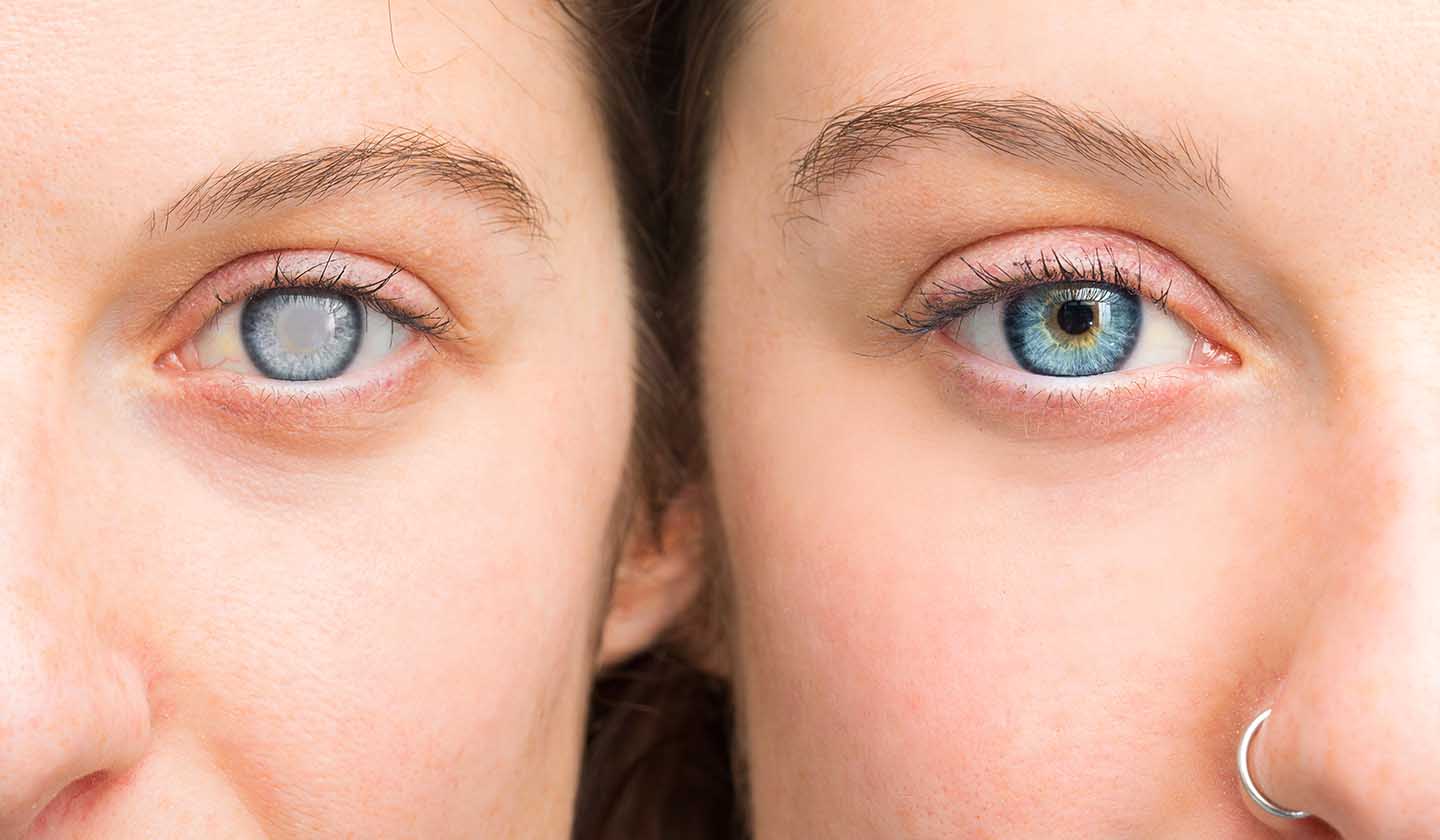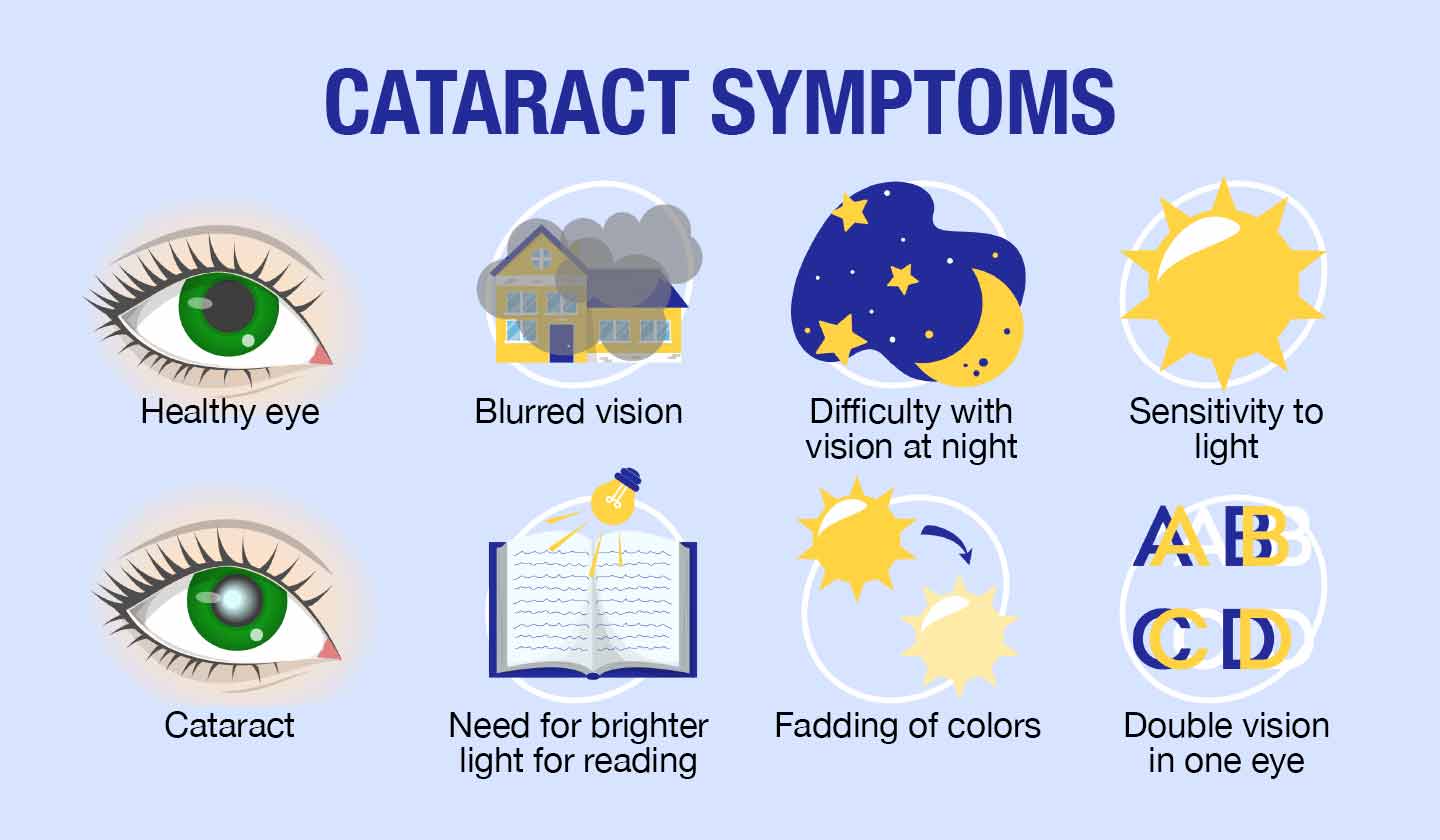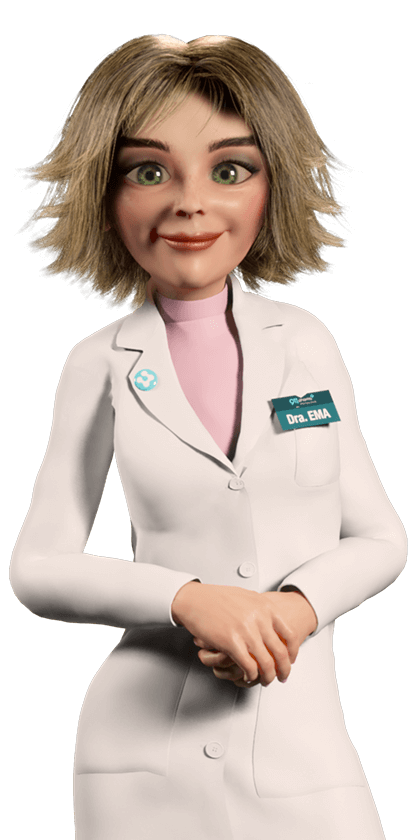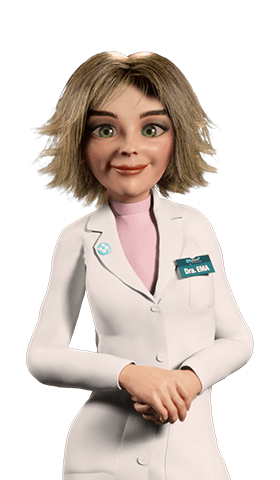Sight
Focused vision beyond age

As we age our sight decreases and some diseases may appear: cataract and AMD (Age-Related Macular Degeneration) are the most limiting. But it is possible to prevent them or, at least, to delay their evolution.

Cataract - Like fogged-up lenses
Cataracts make our vision blurry. This happens because, as you get older, your eye lens - the crystalline lens - becomes thicker, less transparent, and flexible, allowing less light to enter.
The fibres of the crystalline lens congregate, forming small spots that make hamper vision. They are known as cataracts, which tend to develop slowly and, in general, without pain. The most frequent symptoms are: blurred vision; difficulty seeing at night; increased sensitivity to light and glare; less defined colours; halos around lights; need for more intense light for activities, such as reading, and, occasionally, double vision in one eye.
Cataracts can affect one or both eyes and can evolve at different speeds in each eye. Cataract is not a contagious disease and, therefore, cannot be transmitted from one eye to the other.
Cataracts continue to be one of the major causes of curable blindness in the world.
Surgery is the only effective treatment for cataracts: the damaged crystalline lens is removed and replaced with an artificial lens.

ARMD - Loss of central vision
Age-Related Macular Degeneration (AMD or ARMD) is a disease that affects the macula, the central part of the retina responsible for the sharpness, colour and details of what we see, and which we use to read, sign a check, thread a needle or even recognize a face.
As the macula deteriorates, symptoms can arise in a variety of ways. Loss of central vision (close and/or far) can occur, spots in the field of view, unclear images, no details, distorted images - straight lines appear irregular or curved, and colours are less bright and intense. This disease is not always treatable, but some medical measures can be taken to prevent progression to more severe forms.

Protecting the eyes
- Eat a healthy diet, abundant in fruits and vegetables - as they provide vitamins and minerals with antioxidant protective action for the eyes;
- Do not smoke - tobacco is harmful to the eyes since it increases the risk of cataracts and ARMD;
- Wear sunglasses with UV protection - ultraviolet radiation is harmful to the eyes;
- Monitor eye health regularly - the Portuguese General Directorate of Health recommends, in general terms, visits to the ophthalmologist at least every 4 years from the age of 46, and every 2 years from the age of 65;
- Diabetes and hypertension should be controlled;
- If you already have cataracts, try not to strain your eyes - use a magnifying glass to read, increase the power of the lamps at home, and avoid driving at night.
Sources
iSaúde
Farmácia Distribuição Magazine
Também lhe poderá interessar
Allergies






